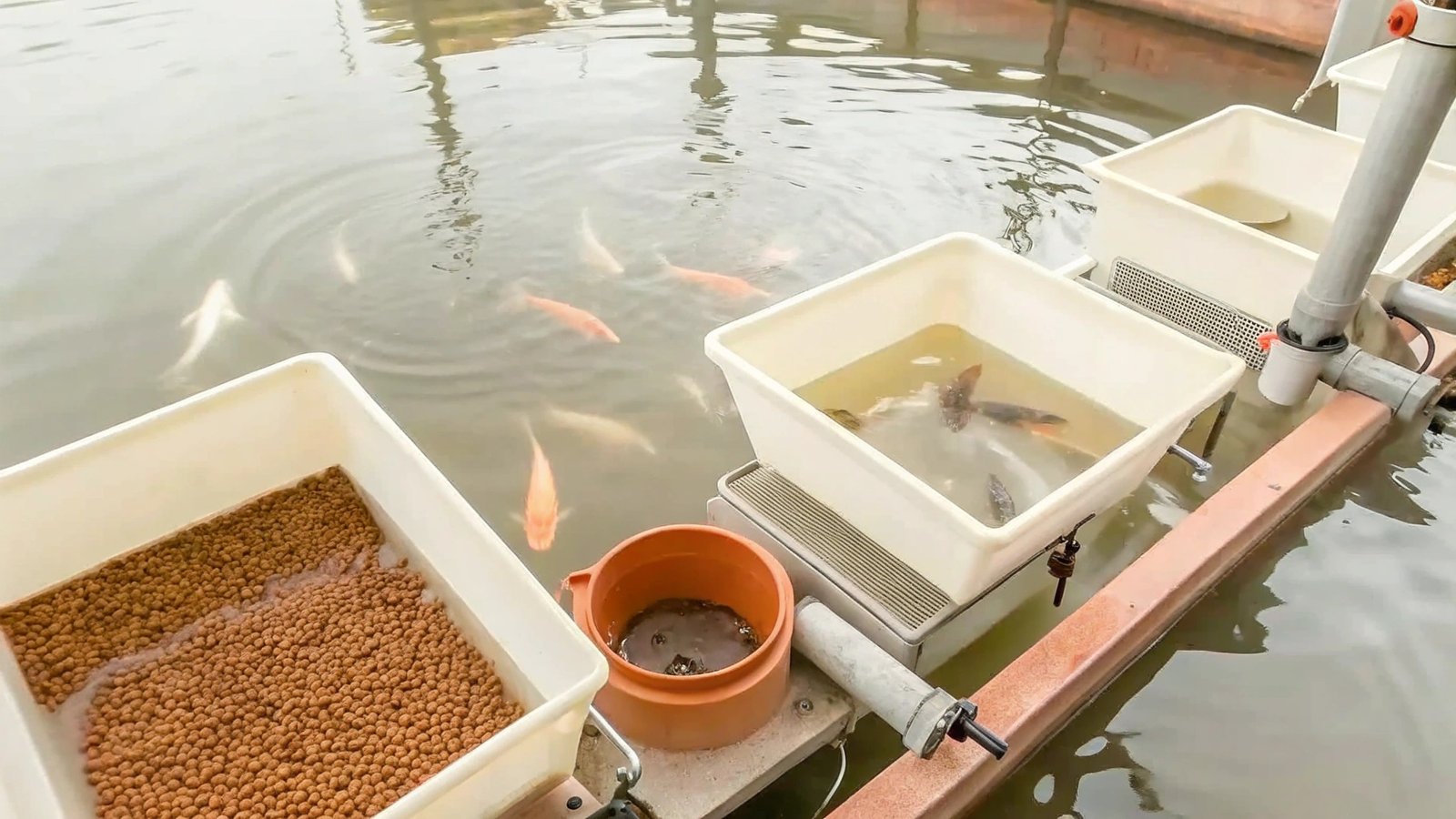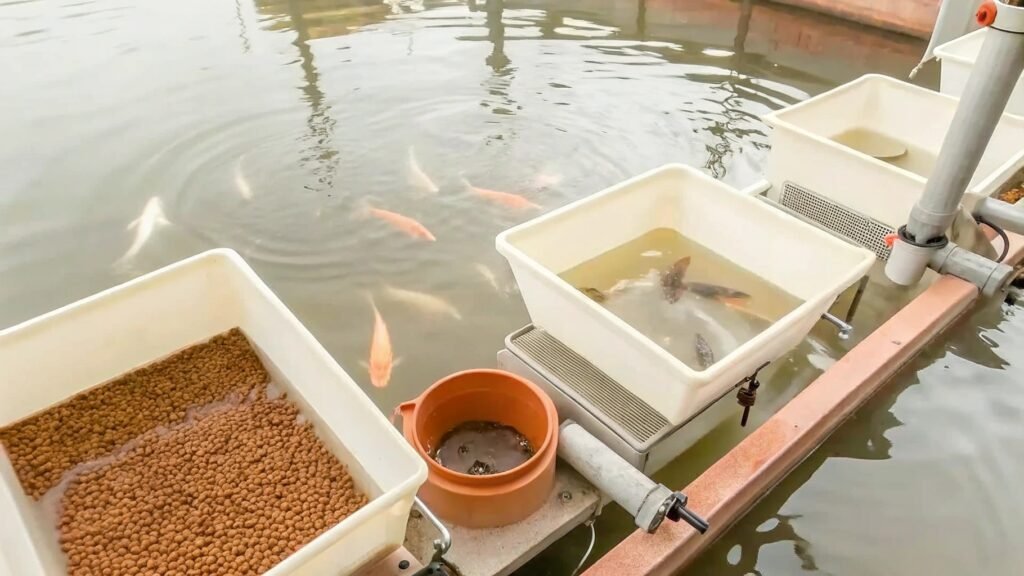
Fish farmers and feed manufacturers must carefully select the right ingredients to ensure optimal fish growth, health, and feed conversion efficiency. The nutritional content of fish feed directly impacts fish performance, water quality, and overall production costs. A balanced fish feed typically consists of protein sources, carbohydrates, lipids, vitamins, minerals, and functional additives.
Key ingredients used in fish feed production include fish meal, soybean meal, corn gluten meal, wheat flour, fish oil, vitamins, minerals, and specialized additives. Each ingredient serves a specific function, such as providing essential amino acids, enhancing digestibility, and boosting fish immunity.
Selecting the right combination of ingredients depends on the fish species, farming conditions, and nutritional requirements. Read on to explore the essential components used in modern fish feed formulations.
Fish feed must contain at least 70% protein for optimal fish growth.False
Most fish feed contains between 25% and 50% protein, depending on the species and life stage of the fish.
1. Protein Sources in Fish Feed
Proteins are essential for fish growth, muscle development, and metabolic processes. High-quality protein sources ensure efficient feed conversion and optimal health.
Common Protein Ingredients
| Protein Source | Protein Content (%) | Notes |
|---|---|---|
| Fish Meal | 60-72% | Highly digestible, rich in amino acids |
| Soybean Meal | 44-50% | Plant-based alternative to fish meal |
| Corn Gluten Meal | 60% | High protein but lacks lysine |
| Meat & Bone Meal | 45-55% | Animal-based, less digestible |
| Feather Meal | 80-85% | High protein but low digestibility |
Key Considerations:
- Fish meal is the gold standard due to its high digestibility and essential amino acids.
- Soybean meal is a sustainable alternative but requires proper processing to remove anti-nutritional factors.
- Corn gluten meal is commonly used to boost protein levels but should be balanced with other protein sources.
Soybean meal is an inferior protein source compared to fish meal.False
Soybean meal can be a highly effective protein source if properly processed and balanced with essential amino acids.
2. Carbohydrate Sources in Fish Feed
Carbohydrates provide energy for fish, support metabolism, and help bind pellets together. However, different fish species have varying carbohydrate tolerances.
Common Carbohydrate Ingredients
| Carbohydrate Source | Function |
|---|---|
| Wheat Flour | Pellet binder and energy source |
| Corn Meal | Provides digestible carbohydrates |
| Rice Bran | High fiber content, suitable for herbivorous fish |
| Cassava Starch | Used for pellet binding and energy |
Key Considerations:
- Carnivorous fish (e.g., trout, salmon) require low carbohydrate levels, while omnivorous fish (e.g., tilapia, carp) can efficiently utilize more carbohydrates.
- Carbohydrates help in pellet formation and improve feed water stability.
3. Lipid (Fat) Sources in Fish Feed
Lipids are a dense energy source and supply essential fatty acids required for fish growth, immune function, and reproductive health.
Common Lipid Ingredients
| Lipid Source | Key Benefits |
|---|---|
| Fish Oil | High in Omega-3 fatty acids (EPA & DHA) |
| Soybean Oil | Sustainable plant-based alternative |
| Poultry Fat | Cost-effective lipid source |
| Linseed Oil | Contains Omega-3 but lower bioavailability than fish oil |
Key Considerations:
- Marine fish (e.g., salmon) require higher levels of Omega-3 fatty acids (EPA & DHA) from fish oil.
- Soybean oil can be used in plant-based diets but lacks the long-chain fatty acids found in fish oil.
- Excess fat can lead to feed oxidation and quality degradation, requiring antioxidants.
4. Essential Vitamins and Minerals
Vitamins and minerals are critical for fish metabolism, immune response, and overall health. Deficiencies can lead to poor growth, disease susceptibility, and deformities.
Common Vitamin Additives
| Vitamin | Function |
|---|---|
| Vitamin A | Vision, immune function |
| Vitamin D | Bone health, calcium absorption |
| Vitamin E | Antioxidant, protects against oxidative stress |
| Vitamin C | Immune booster, collagen synthesis |
| B-complex (B1, B2, B6, B12) | Supports metabolism and energy production |
Common Mineral Additives
| Mineral | Function |
|---|---|
| Calcium | Bone development |
| Phosphorus | Essential for skeletal structure |
| Magnesium | Supports enzyme function |
| Iron | Oxygen transport in blood |
| Zinc | Immune function and wound healing |
Key Considerations:
- Vitamins are often added in synthetic form to ensure stability in pelletized feeds.
- Trace minerals (e.g., zinc, copper, selenium) are essential but must be provided in controlled amounts to prevent toxicity.
Fish do not require vitamins in formulated feeds because they get them from natural water sources.False
Farmed fish rely on formulated feeds for their vitamin intake since their environment lacks natural sources.
5. Functional Additives in Fish Feed
Functional additives improve feed efficiency, fish health, and water quality. These include enzymes, probiotics, and immunostimulants.
Common Functional Additives
| Additive Type | Function |
|---|---|
| Probiotics | Enhance gut health and digestion |
| Enzymes | Improve nutrient absorption |
| Antioxidants | Prevent feed oxidation and spoilage |
| Immunostimulants | Boost disease resistance |
| Pigments (e.g., Astaxanthin) | Enhance flesh color in species like salmon |
Key Considerations:
- Probiotics (e.g., Bacillus spp.) improve gut health and feed conversion.
- Astaxanthin is used in salmonid diets to enhance pinkish flesh coloration.
- Feed antioxidants (e.g., ethoxyquin, tocopherols) prevent lipid oxidation.
6. Summary: Optimizing Fish Feed Formulation
The best fish feed formulation balances protein, carbohydrates, lipids, vitamins, minerals, and additives for optimal growth and health. Below is a typical composition breakdown:
| Nutrient Category | Inclusion Range (%) |
|---|---|
| Protein | 25-50% |
| Carbohydrates | 10-30% |
| Lipids | 5-20% |
| Vitamins/Minerals | 1-5% |
| Additives | 0.5-2% |
The final composition depends on the species, growth stage, and feeding environment.
7. Conclusion: Choosing the Best Ingredients for Fish Feed
Selecting the right ingredients in fish feed production is crucial for maximizing fish growth, feed efficiency, and farm profitability.
- High-quality protein sources like fish meal and soybean meal are essential for growth.
- Carbohydrates and lipids provide necessary energy and help in pellet binding.
- Vitamins, minerals, and additives ensure overall fish health and performance.
A well-balanced feed formulation leads to improved fish health, better feed conversion ratios (FCR), and sustainable aquaculture practices.
👉 Need expert assistance in fish feed formulation? Contact us today for custom feed solutions to boost your aquaculture success!









